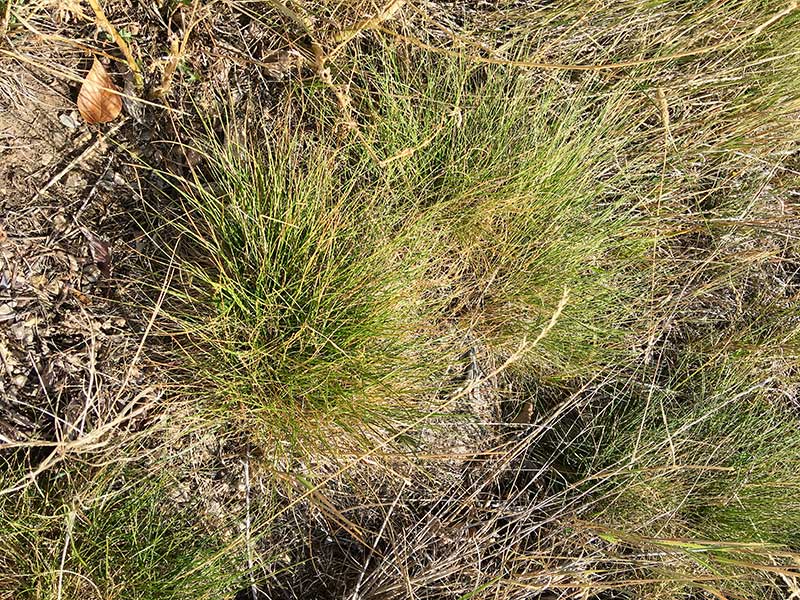Festuca idahoensis / Idaho fescue
- a bunchgrass growing in very dense clumps
- over-winters green; an early green grass in spring
- green to blue-green to silvery green leaves
- individual flowers in clusters of hairy spikelets on branched panicles; very dark purple or green
- seeds have large spines (awns) at the tips
Also known as: blue bunchgrass
Note: grasses have a nomenclature all their own, much different from that of dicots. A good resource/slide show from the University of Idaho on grass structures is available here.
Idaho fescue is a native grass, widespread throughout the west, and very common. It is a long-lived perennial bunchgrass with deep roots. It grows in very dense clumps, 1-3 feet tall. It is one of the first grasses to appear green in the spring, partly because it over-winters green. This characteristic gives it a competitive advantage as does the density of the clumps and roots.
The Idaho fescue inflorescence is a panicle with 1-3 branches at the lower nodes. It may be open and branching or “contracted” (all the spikelets pressed against the stem). The individual flowers are in clusters of hairy spikelets that may appear very dark purple or green. Each flower contains both male and female structures.
The leaves of Idaho fescue are stiff, short and rolling. They grow from the base of the clump. Their color can be variable, from the usual green to blue-green to silvery-blue. Selection of the most blue-green or silvery plants has led to cultivar development and commercial availability as an ornamental.
The leaves often remain green through the summer, but if not, they can re-green in the fall. As a result, Idaho fescue is an important forage for both domestic and native grazers, including pronghorns, elk, bighorn sheep, deer, and to some extent, grizzlies.
Idaho fescue seeds have large spines at the tips… awns. The sharpness of the awns putatively deters grazers. Seeds mature in mid-summer and are promptly dispersed. They germinate in as little as 8-10 days, but can remain in the soil until fall rains allow growth. Fall growth allows the plants to be well-established by winter.
Idaho fescue is widely distributed, from shady places to open grasslands. Although it is deeply and strongly rooted, half or more of the roots are in the top inch of soil. This makes this species useful in soil stabilization, both natural and restorative. The roots are associated with mycorrhizae, aiding significantly in the plant’s nutrition, especially in poorer soils.
| Family | |
|---|---|
| Inflorescence size | |
| Inflorescence type | |
| When? |





